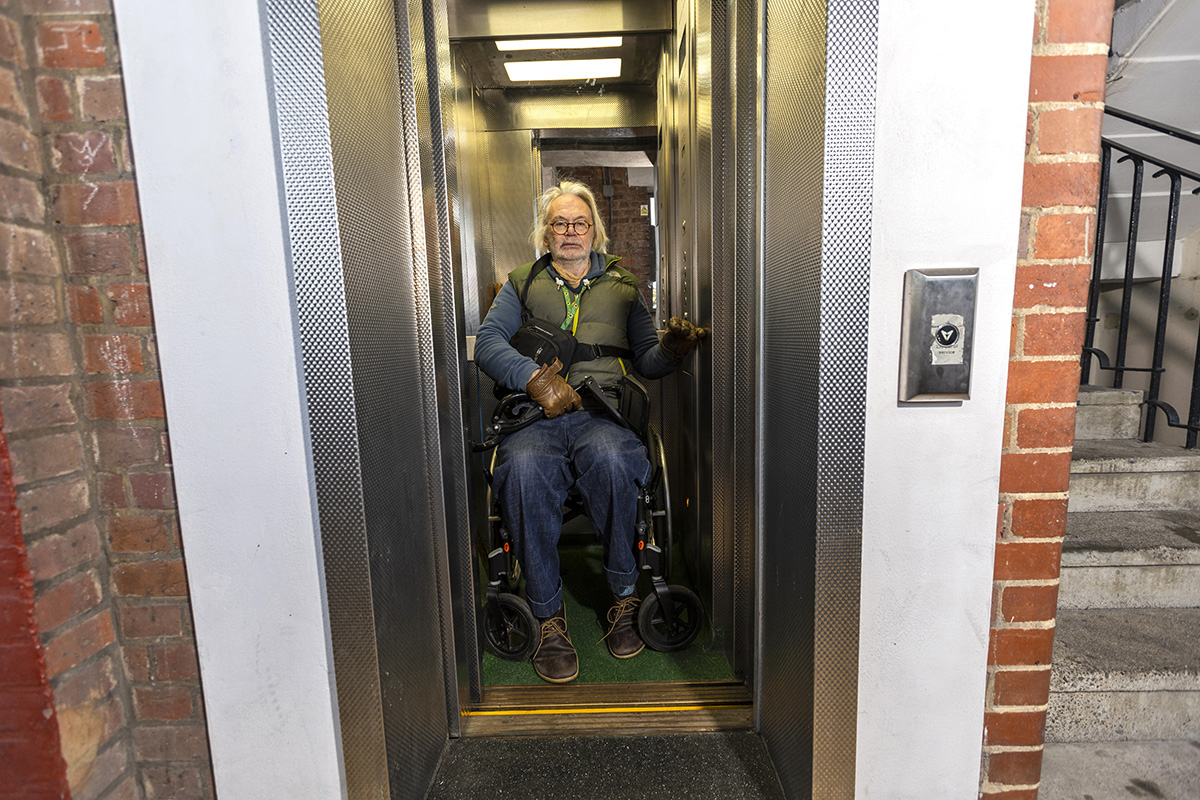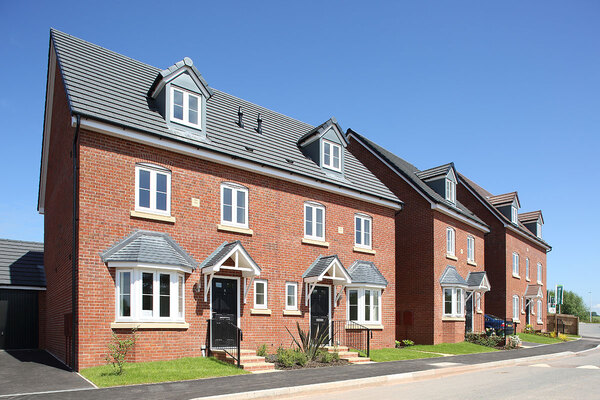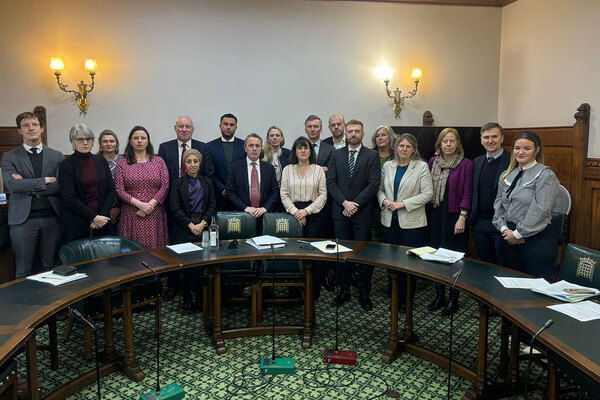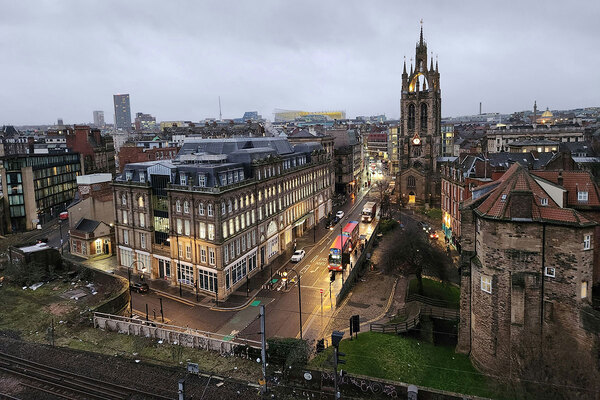You are viewing 1 of your 1 free articles
A long-term plan for fixing the building safety crisis
State oversight of building safety may be our only route out of this ever-expanding crisis, writes Peter Apps, contributing editor at Inside Housing, as part of the #PlanForHousing campaign
At an early meeting of government officials and industry representatives as it started to become clear that many buildings would need fixing after the Grenfell Tower fire, one of the participants suggested the idea of some form of direct government control to ensure the prompt resolution of the issue.
The state – it was suggested – should take charge of deciding which buildings were the highest priority for repair, divert resources to ensure their rapid remediation, and even order and oversee the works where necessary.
The idea went down like a lead balloon. “We don’t live in a Marxist country,” one of the industry representatives responded, summing up the mood of the room.
But as we now move into 2025 – the eighth year of the building safety crisis – and remain bereft of leadership, clarity and a clear path to the end of the process, it feels increasingly like the idea of some more direct control would have been a better answer.
It’s some time since I read Das Kapital as a naive university student, but I don’t recall it calling for a national oversight of building safety work, a more prescriptive means of determining the risks, and upfront central government funding for repairs.
Which is to say – somewhat flippantly – that there are several degrees of state control and oversight we could explore with regard to building safety without pitching into full-scale communism and, indeed, doing so may be our only genuine route out of this ever-expanding crisis.
This is something Labour appears to have understood in opposition, but forgotten in government.
Let’s start with the raw numbers. As of the most recent update, there are 4,998 buildings with ‘life-safety defects’ that require remediation, of which 1,463 are complete and 934 have started works.
This leaves more than half stuck in the weird pre-remediation purgatory period, which involves difficulty obtaining insurance and mortgages, and the looming spectre of expensive interim measures, building evacuation and – of course – fire.
The picture gets a good deal worse once you realise that the 4,998 buildings are likely to be less than half the total which will require remediation, because we still haven’t identified many of the medium-rise buildings that will need fixing.
The grim reality is that after eight years, we have no real idea when the crisis will be solved, or a genuine pathway to a solution. Over the past 12 months, a shade under 700 buildings completed works. If that rate is kept up, the work will finish somewhere around 2040. This is plainly not good enough.
So what is going wrong and what could a plan to fix it look like?
Let’s start with the identification of risk. This is the first step on a building’s journey through this labyrinth.
These days a building will likely come into this because a regular fire risk assessment, which is now obliged to consider the external wall, is carried out.
Here, the risk assessors apply government-endorsed guidance called PAS 9980, which gives the risk assessor a framework for determining the risk level of the external wall.
The trouble here, though, is that the guidance is extremely complex, leaves a good deal of room for disagreement and does not cohere with other standards that will be applied later down the line by other parties.
“Over the past 12 months, a shade under 700 buildings completed works. If that rate is kept up, the work will finish somewhere around 2040. This is plainly not good enough”
For example, PAS 9980 contains an inherent idea of tolerable risk. It is intended as a life safety standard and comes with the assumption that a bit of combustible cladding won’t necessarily pose a risk to life. If it doesn’t, there isn’t any need to remove it from the building.
This may sound like good sense (and is definitely a better approach than the scorched earth, remove everything philosophy of previous official advice notes). But it is not the same standard that the insurance industry will use to grade risk, where they will be trying to make an assessment of the building’s ‘maximum foreseeable loss’ and pricing their premiums accordingly.
If they think fire could spread across multiple floors, the building is going to be unattractive as an insurance proposition, leaving it in a very limited and expensive market.
The PAS 9980 standard is different again from the contracts that were signed when the building was built, which required adherence to statutory building regulations standards. This will cause legal difficulties, because various parties may want to sue for breach of contract rather than accept the lesser fixes recommended by the guidance. And by carrying out the work, they will miss their chance to do this.
For many buildings, once a PAS 9980 assessment recommends work be carried out, the cost moves on to the original developer under the contracts they have signed with government.
But the PAS 9980 assessment carried out by the freeholder may be different again from the PAS 9980 assessment carried out by the developer, who has a massive financial incentive to reduce the scope of work and access to an army of fire risk assessors who will write whatever their client wants them to.
Working through this process can take years, with nothing happening but the enrichment of legal teams.
If we even do get through it and arrive at a scope of works agreed by all parties, we then enter a remediation environment where there are major shortages of almost all the key professionals needed to oversee the work, as well as materials and labour. Not to mention the backlogged planning process. The result is glacial process even after agreement has allowed works to get going.
This is having huge consequences, for the million or so impacted residents first and foremost. But beyond that, the effects ripple out: the social housing sector is currently collapsing under financial strain and this work is a major contributor. The 91% collapse in affordable housebuilding in London should be seen as a major national problem, threatening as it does the only plan we have to ensure our capital city remains functional in this era of soaring private rents and house-price-to-income ratios that read like a bad night at the Tottenham Hotspur Stadium.
London’s social housing sector has the biggest exposure to dangerous blocks, and the time and money being spent on this is diverted directly from building the new affordable homes the city needs.
This is true across the private sector as well; the quicker this crisis is resolved, the quicker the construction sector can get back to its major focus of building new stuff we need – work that accounts for roughly 7% of the country’s GDP.
To get to this place, we need a long-term plan that is realistic about the scale of the problem we face as a country and the capacity of industry to fix it alone. Whatever the precise elements of a plan, I would say it needs three major parts to succeed: consistency, control and funding.
First consistency. Rather than endless fights over precisely what sort of remediation is needed, we need to take a more prescriptive approach that does not allow years to be wasted on the sort of debate described above.
This is possible. Buildings could conceivably be scored on various definitive risk metrics (type of cladding, type of structure, presence of balconies, height, usage etc). You could then produce a score that puts them in various baskets, for example a score of 0-50 means no work is required, 50-100 means sprinklers and alarms to enable a phased evacuation are installed, and above 100 means full remediation.
These are just indicative and would need to be properly worked out by experts, but the point would be finding a set of clear metrics to replace the subjective view of dozens of different risk assessors.
There are downsides to this approach. All buildings are different and in an ideal world a bespoke assessment would be carried out for all of them.
But this attempt to be bespoke has failed on contact with the real world, and remains too open to manipulation by vested interests. The truth is that there are no perfect solutions to this issue, just least-bad ones, and it is possible to make broad evidence-backed statements about what increases or decreases risk (timber frames vs masonry, brick slips vs high-pressure laminate cladding and so on).
“To get to this place, we need a long-term plan that is realistic about the scale of the problem we face as a country and the capacity of industry to fix it alone”
Adopt a scheme like this that produces binary answers and that cannot be manipulated depending on the assessor, and you kill off the fighting and delay that plagues so many blocks.
There is a reasonable chance the middle bracket of buildings (where there is some risk but not full remediation) would struggle with insurance for the reasons described above. Here, again, the state should be more proactive. A reinsurance scheme similar to Flood Re could play a role in making sure the insurance market has confidence in buildings with a higher risk of fire damage than they have previously assumed likely.
There is a potential cost to taxpayers here, but it could well be outweighed by the economic benefit of getting stalled flat sales moving and diverting residents’ spending from inflated insurance payments to the general economy.
The next requirement is control. Australian states have led the way here, with government-run taskforces overseeing the remediation works in their territories. These groups have the power to independently review buildings, order works, settle disputes and issue fines for non-compliance. It’s also precisely what Labour promised to introduce when in opposition.
The final piece of the puzzle is funding. The only buildings that have progressed relatively smoothly to completion are the above-18-metre buildings with the same aluminium composite material (ACM) cladding used on Grenfell.
This is because, in my view, there was certainty that they required remediation from a very early stage and full government funding to pay for them to be fixed from as early as 2019. These two factors means work just got going and the almost-500 blocks in this class of buildings are now largely done (belated but extremely good news given the risks associated with ACM).
If we are to get moving with other buildings, the same funding certainty is required. This is to remove the burden on leaseholders (especially those in orphan blocks or branded ‘non-qualifying’ for protection from costs), as well as to ensure the cost of works does not simply break the social housing model.
The problem, though, is that the state of public finances makes it impossible for Rachel Reeves to put her hand in her pocket and pay the full £16.6bn which the National Audit Office estimates it will cost.
The answer instead should be an industry levy. We currently levy developers for around £4bn to contribute to the crisis, and it would be very possible to expand this funding.
You could bring many more parties into the scope of the levy (including product manufacturers that are without doubt the most culpable for the state we’re in, as well as the ones that have profited most directly from it). You could then stretch this expanded levy over many more years to get a larger overall sum.
The magic of this approach is that it would be quite likely to qualify as a financial asset under new fiscal rules and allow the state to borrow to pay for the works upfront without breaking debt rules.
You might think this plan sounds anti-business, until I tell you that it has been proposed by businesses that would be covered by the levy. Some, as I understand it, have even written to the Treasury asking them to introduce such a mechanism.
The reasoning is that the certainty of a levy can be easily reflected in year-end accounts, whereas the potential for huge individual costs can result in a much bigger write-down. The endless cost of legal fights with no end in sight is also a cost that businesses could do without.
Put all these things together and you would probably end up with a smaller group of higher-risk buildings, the money to repair them and a state-run lever to force the small-but-significant subset of reluctant, feckless or dishonest players in this story to get moving and stop frustrating the process.
Now, this is just one suggestion of an alternative approach, based on conversations with many of those involved in the field.
But it isn’t the only way to plot a course through this crisis, nor is it necessarily the best one.
I am not saying the government should do exactly what I’ve suggested here, but I am saying it needs to take a new approach – one that offers us a clear route to a conclusion and one that involves a much more proactive state to ensure we get there.
The building safety crisis has always been a long-term problem. It requires a long-term plan.
Peter Apps, contributing editor, Inside Housing; and author of ‘Show Me the Bodies: How We Let Grenfell Happen’
Sign up for our fire safety newsletter
Already have an account? Click here to manage your newsletters












